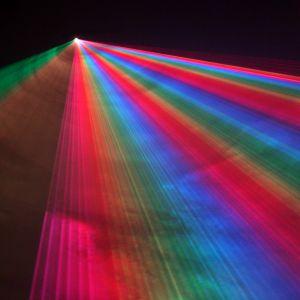Arizona State University’s expanding research, education and entrepreneurial endeavors in photonics engineering and science has led to formation of the Center for Photonics Innovation.
The Arizona Board of Regents recently approved establishment of the center, which will combine university research and teaching resources in electrical engineering, physics, materials science and engineering, and bioengineering.
 ASU's new Center for Photonics Innovation will pursue discoveries and broaden education in the expanding field of photonics – the generation and control of nearly all forms of light.
ASU's new Center for Photonics Innovation will pursue discoveries and broaden education in the expanding field of photonics – the generation and control of nearly all forms of light.
The center’s research focuses on semiconductor photonic materials and devices and their applications. Photonics involves the generation and control of nearly all forms of light, including visible, infrared and ultraviolet light.
Its applications include communications, information processing, sensing, imaging, solar cells, solid state lighting, medical instruments and technologies used in environmental-protection efforts
The Center for Photonics Innovation will be directed by Yong-Hang Zhang, a professor in the School of Electrical, Computer and Energy Engineering, one of ASU’s Ira A. Fulton Schools of Engineering.
Among the center’s primary goals, Zhang said, are to engage more ASU researchers from varied science and engineering specialties in efforts to advance fundamental knowledge of photon-matter interactions, pursue more use-inspired device and system applications, and “more active entrepreneurship development.”
An equally high priority is to provide opportunities for graduate and undergraduate students to participate in advanced research and education in the growing photonics field “that will better prepare them for future careers,” Zhang said.
“We’re committed not only to achieving new discoveries and promoting commercialization of emerging technologies but to a high academic standard for developing our students into first-rate science and engineering scholars and researchers,” he said.
The new center is an outgrowth of the Center for Nanophotonics, founded in 2006 as part of the Arizona Institute of Nano-Electronics at ASU.
That center took on many “seed” programs in support of industry needs and business start-ups. Its research has been led by faculty in the School of Electrical, Computer and Energy Engineering – including Cun-Zheng Ning, Junseok Chae, Rudy Diaz, Dragica Vasileska, Hongbin Yu and Shane Johnson – and the Department of Physics in ASU’s College of Liberal Arts and Sciences – including Fernando Ponce, David J. Smith and Kong-Thon Tsen.
Their projects have helped to attract more than $7 million in research awards in the past two years.
The center also restructured and expanded curriculum to bolster the quality of instruction in photonics and optoelectronics at ASU to meet needs of the growing number of graduate students attracted to these fields.
Most recently, some of the center’s research leaders were awarded more than $2 million from the Army Research Office, through the highly competitive Multidisciplinary University Research Initiative (MURI) program of the U.S. Department of Defense.
The grant will fund ASU researchers’ role in a collaborative project with other leading research universities to study fundamental aspects of the use of semiconductor superlattices for advanced laser and infrared photodetector technology applications.
It was the third MURI grant awarded to ASU faculty members since 2004 for research related to photonics and semiconductor optoeletronics.
In addition to Zhang, work at the new Center for Photonics Innovation will be led by electrical engineers Ning, Diaz, Yu and Vasileska, along with Stephen Goodnick, Ron Roedel and Brian Skromme, materials engineer Jian Li, bioengineer Bruce Towe, and physicists Ponce, Smith, Tsen, Jose Menendez and Martha McCartney.
Source: http://www.asu.edu/